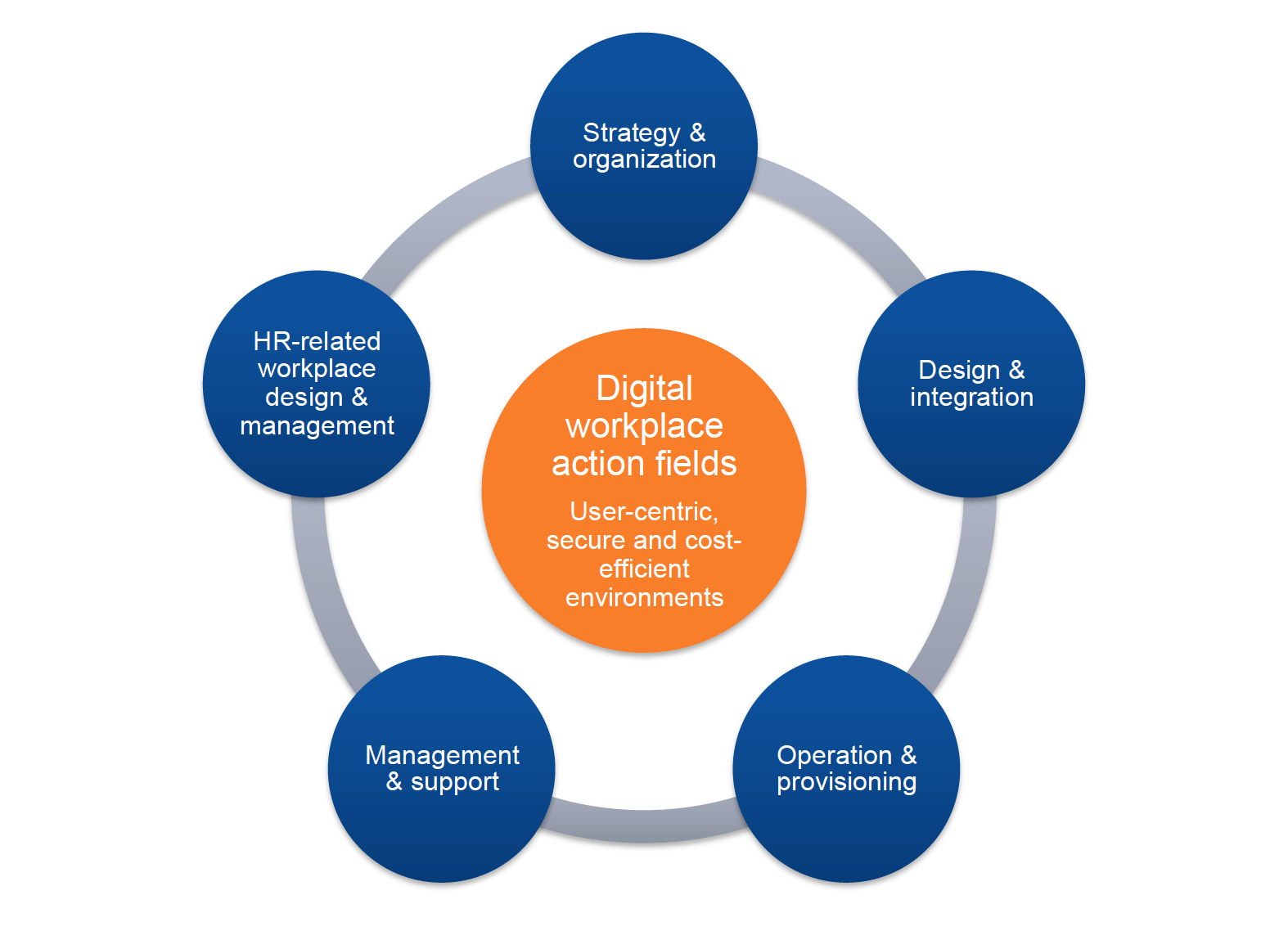Work during and after the coronavirus pandemic – the time is right to implement a strategy on future working models
During the initial phase of the coronavirus pandemic, many organizations sent parts of their workforce to work from home. Within a short period of time employees and employers have been forced to completely transform their ways of working. The shift to the “new normal” put huge pressure not just on networks, security and cloud provisioning layers but also on individuals and team structures.
Some managers realized that they had an issue with not being able to see their teams, that trust in the working habits of team members was not just empty talk but a necessity, and that management by walking through the office would no longer work. This is why quite a few organizations asked their employees to come back to the office during the summer.
But the back-to-the-office call in summer 2020, mainly initiated by management, met the needs of only part of the workforce. Some employees enjoyed the remote work experience and its advantages, such as work-life-balance, elimination of commute times, being more productive or creative due to the absence of any disturbance, etc. These employees will be reluctant to go back to the office on a daily basis, which might affect motivation, loyalty, and commitment. Some employees found they were unable to deal with this new freedom or missed the social interaction with their colleagues. These employees were happy during the summer and are finding it hard to be again forced to work from home.
Office, remote, hybrid – a strategy is needed, now!
Now, with the 2nd wave of the pandemic underway, working from home has become more attractive for employees and employers. Organizations need to define a clear strategy on future working models, i.e. office, remote work, or hybrid on an individual basis, as it is unclear how long this pandemic will impact society.
The basic question that needs to be answered is which working model fits the organization and the needs of the different roles and individuals in an organization, and what an overall working model may look like.
For large parts of employees working in shop-floor environments or in customer-facing roles, working from home is not an option. For office workers, the future working model is relevant and has an impact on motivation, loyalty, and satisfaction.
To define a valid future working model, the requirements of employees and management need to be aligned with the abilities of the organization and its IT infrastructure.
Management must adapt its management style to the strategy
Middle and upper management must rethink their approach in many organizations – Many managers sang their own praises during the first phase of the pandemic for their flexibility and the rapid introduction of remote working. They deliberately overlooked the fact that employees were at least as flexible in turning their kitchen tables into offices and thus keeping operations running. What was also overlooked was the fact that such distributed organizations require different management techniques.
A more flexible approach will be needed in the future, and management needs to be able to handle it.
The strategy and its execution must reflect Individual needs
The future working model in most organizations will strongly focus on individual needs with a close connection to organizational needs. Consideration for individual needs leads to higher motivation, loyalty, and commitment, and might attract talent which is keen to be recognized as individuals.
Obviously, this has to be matched with the needs of the organization. Videoconferencing can replace inperson meetings in many cases, but not in all. Therefore, even if working from home is an option, there may be a need for office days on a regular (not necessarily frequent) basis.
To understand the individual needs of employees, managers must talk to their staff. Understanding the needs allows to find a suitable working model in the future and eliminates irritation and frustration on both sides. These needs might change over time, therefore decisions on remote work, office, or a hybrid model need to be adjusted from time to time.
Central action fields of workplace modernization, ©PAC 2021
Organizations must learn to deal with a new future approach to work
Especially organizations with little experience in remote working need to learn that new working models – combining the use of digital technology with the implementation of new, employee-centric policies and collaborative, digital workplaces – can improve their overall performance.
The digital workplace presumes a holistic approach for optimization and major paradigm shifts with respect to strategy, design, operations, management and support.
It may take some time for this realization to take hold. It is crucial for senior management to back such a new strategy, and it also needs to be implemented in middle management.
Technology as basis
Working from home is easy to do if the IT infrastructure is ready for it. Technology is the basis of a strategy on future working models. Topics such as VPN and SaaS, as well as workspace as a service and SASE are important to ensure safe access to applications and data, and to keep operations running.
The required endpoint hardware is the easy part. The more complex aspect is secure access to enterprise applications and data. This requires specific infrastructure and security architecture, otherwise the entire discussion is purely academic.

0 thoughts on "Work during and after the coronavirus pandemic – the time is right to implement a strategy on future working models"